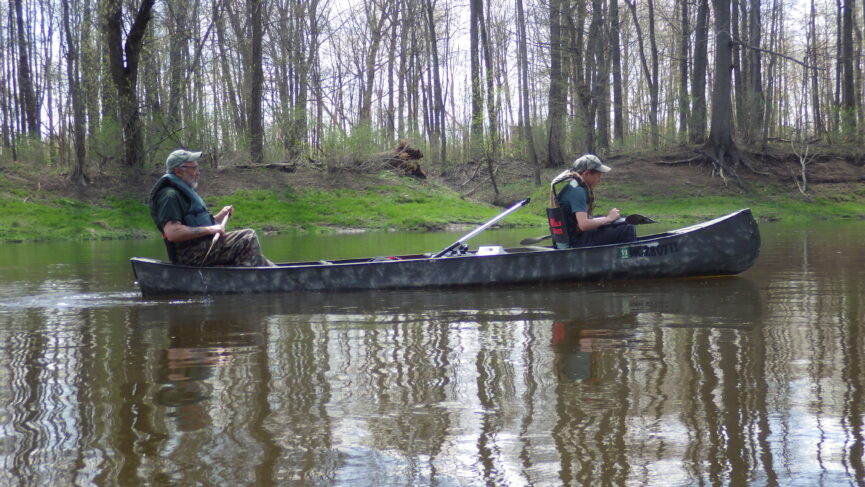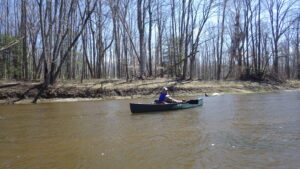
The canoe has a very ancient and prestigious history with its origins dating back thousands of years, and its design has remained virtually unchanged. Variations of it can be found, with it having been used by primitive folks all over the world. The oldest canoe known thus far was a dugout discovered during an excavation in the Netherlands, which was dated to have been used sometime in 8200 – 7600 BC.
The canoe gets its name from the word “kenu” (meaning dugout) of the Carib Indians of the Caribbean islands who used their handy dugout canoes for navigating in the ocean. This primitive but very durable design remains still in use today in many parts of the world.
The name canoe would stick when referring to the key watercraft of the Native Americans in North America. Besides the dugout design made from hollowing out and carving a tree trunk, what comes to mind for most folks is the birchbark canoe made famous by not only Native Americans who created it, but also the French Voyageurs during the fur trade era. Other types of tree bark according to availability in a region such as elm, cedar and spruce were also used for covering canoes.
The birchbark canoe had the ability to maintain a shallow draft while carrying a heavy load, and when empty was light enough to portage around hazardous or impossible to navigate situations such as logjams, roaring rapids and waterfalls which could be frequently encountered on a long trip. Demand for canoes during the fur trade era was such that the French created the first known canoe factory in 1750 at Trois-Rivieres, Quebec. Voyageurs used canoes which could be as large as 35 feet in length and with a crew of up to twelve paddlers.
A beauty of the birch bark canoe was that it could be easily repaired with natural materials found on the forested shoreline, and it would remain popular until the early 20th Century for wilderness travel. What would eventually replace it would be the wood framed, canvas version which first came about during the latter part of the 19th Century. However, it paid to have a repair kit along for the canvas version, because the material to fix matters wasn’t growing on trees close by.
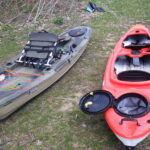
Eventually aluminum would become the favorite material for canoe building, and for a good reason, because it is pretty tough and relatively light in weight, and it remains popular to this day. Fiberglass would also be used, and we now have a variety of modern plastics and composites being used in very tough and durable canoe construction, which has become quite popular today.
The first canoe I ever used when I was a kid was the wood/canvas version, but I’ve probably used aluminum canoes more than any other type because they truly can take a beating and keep ticking despite a few dents. I also have a fiberglass canoe which can take a beating and is light as a feather in the water but is a tad heavy whenever portaging.
Because Michigan is blessed with a bounty of opportunities for good times paddling in the great outdoors, I’ve canoed quite a few rivers in the state, including even on Isle Royale. The canoe, after all, is Michigan’s historical watercraft. I’ve also canoed in Canada, and I will always remember being out in the North Atlantic with my Inuit hunting guides in an outboard-powered, large freighter canoe which was also handy for navigating ocean fiords, even in waters going shallow with outgoing tides. It remains a very necessary “workhorse” for motivating in the wilderness.
There are two types of canoes, K and C, with the “K” version relating to kayaks which were created in the far north and originally constructed using driftwood which was covered with animal skins. It usually had a closed deck to handle traveling in a very rugged environment. There are various types of kayaks made of high-tech materials today and they have become very popular because they are quite agile when used with the typical two-bladed paddle.
Type “C” (for Canada) is the typical canoe design, and I feel right at home in this time-tested watercraft, but I have developed a very deep respect for the adept maneuverability of a kayak, especially after paddling the historic Cass River from Cass City to Saginaw in 2018, which entailed five days. The avid paddlers accompanying me on the journey who were in kayaks truly impressed me, and I did the final legs of this paddling adventure with a variety of kayaks provided by Frankenmuth Kayak Adventures. I learned a long time ago to use reputable canoe/kayak rentals which are available throughout Michigan, because they are convenient and truly save on the logistics of hauling your own. Another good resource on the Cass River is Sivak’s Boat Rental in Vassar.
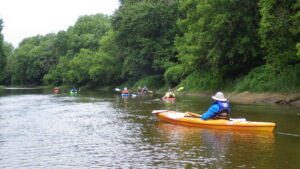
One of my old-time heroes is George Washington Sears (1821 – 1890) who went by the pen name of “Nessmuk”. Nessmuk wasn’t a very large man, being 5 feet 3 inches tall and weighing not much over 100 pounds. He was also physically frail and suffered from consumption (a combination of tuberculosis and asthma) but he was obviously tougher than nails. He was able to live off the land with nothing more than the clothes on his back and whatever he had in a small pack. He was the individual who literally invented “ultralight camping”.
He wrote articles about his adventures for “Forest and Stream” magazine as well as a book on camping in 1884 called “Woodcraft”, which still remains a classic. In the early 1880’s he would make five separate, lengthy canoe trips in the Adirondacks, using exceptionally small and lightweight canoes which were “Clinker” constructed using cedar strips and without thwarts or bracing. An example was a canoe he named the “Sairy Gamp” (after a Dickens character) that was 9 feet long and only weighed 10 and a half pounds. He used a doubled-bladed paddle to negotiate 266 miles in the Adirondack Wilderness in this tiny craft. None of his solo (he called it “one-fool power in the middle”) canoes were more than 10 and a half feet long, and they all individually weighed only 22 pounds or less. Nessmuk’s writings would popularize this type of canoeing adventure for generations to come, and for a fact, he sure influenced me.
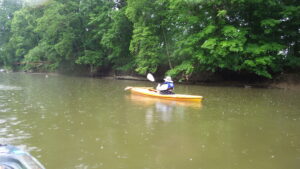
Having long wanted a “one-fool power in the middle” canoe, I purchased a L.L. Bean “Discovery” manufactured by Old Town, and at 11 feet, 9 inches in length, it weighs 49 pounds and is constructed of 3 layers of tough polyethylene. It can carry up to 500 pounds and although it is a bit longer and heavier than Nessmuk’s canoes, I’m also a foot taller and weigh more than twice as much as him, so I’m pretty sure he would understand.
Yep, folks, I truly appreciate the paddling adventures that an ancient designed and very enduring watercraft has allowed me to experience around our wonderful state of Michigan, which offers a truly bountiful supply of lakes and rivers for all to enjoy.
Happy paddling!
- Summertime plinking while dealing with the “red menacing horde “ - July 16, 2024
- Ladies Preparing To Take Aim - June 23, 2024
- The magical atmosphere of fishing during the “Dog Days” of summer - June 17, 2024

